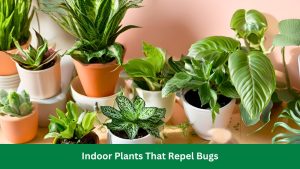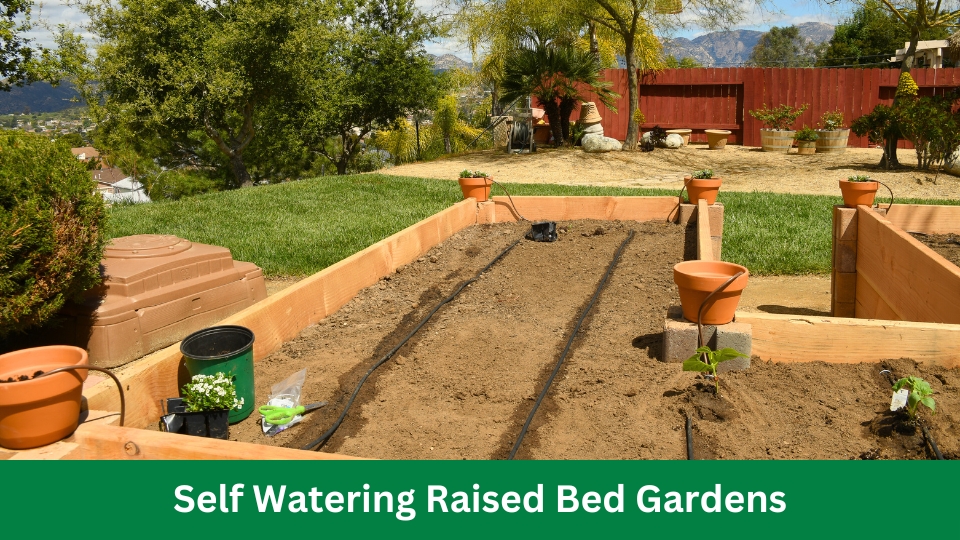
Self Watering Raised Bed Gardens
A self-watering raised bed garden ensures consistent plant moisture without manual watering. It utilizes a built-in reservoir to provide water to the roots directly.
Raised bed gardening has revolutionized urban and space-constrained gardening, but keeping these beds consistently watered poses a challenge for many gardeners. A self-watering raised bed is the perfect solution, combining the advantages of raised beds with a low-maintenance watering system.
This approach offers efficient water usage and is ideal for those with busy schedules or in areas with water-use restrictions. Self-watering raised beds often feature a wicking system that draws water from a reservoir into the soil, providing plants with steady moisture supplies. This results in healthier plants and improves yields, all while minimizing frequent watering. Setting up a self-watering raised bed can save time and ensure your garden thrives, even during the hot summer days.
The Appeal Of Self-watering Raised Bed Gardens
Imagine a garden that drinks water on its own. This is the magic of self-watering raised bed gardens. Busy folks love these. You don’t need to water plants every day. Plant roots get moisture from a built-in system. It’s like having a robotic gardener. These beds help plants thrive. They reduce garden chores significantly. Water waste drops, too.
Let’s dive into why these raised beds charm new and seasoned gardeners alike.
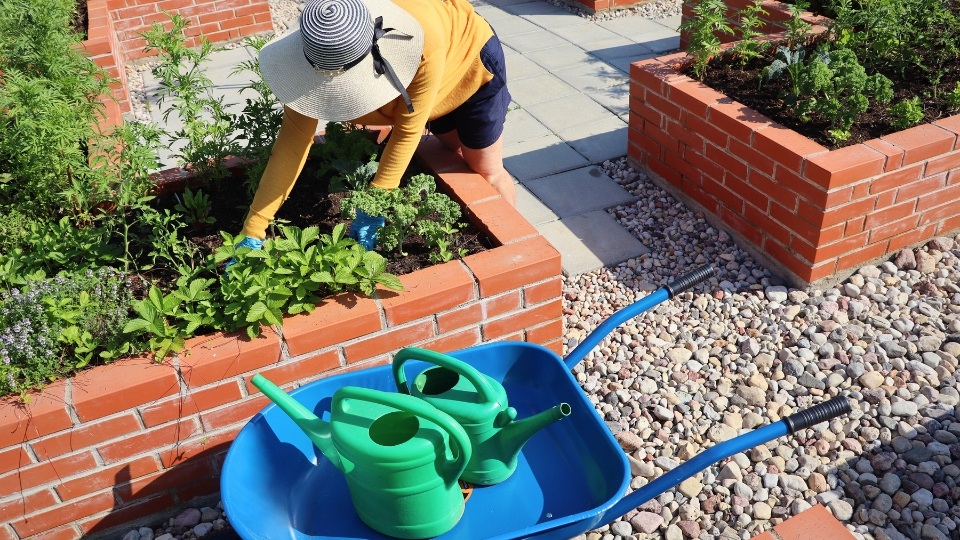
Benefits For Gardeners Of All Levels
- There is no guesswork with watering. The system knows when to water.
- Perfect for beginners. It simplifies learning gardening basics.
- Experts save time—more time for complex gardening tasks.
- Back-friendly gardening. Raised beds reduce bending and stooping.
- Adaptable to many spaces. Urban balconies or sprawling backyards work.
Maximizing Yield With Minimal Effort
Grow more with less work. Self-watering beds use water smartly. Roots get what they need. Over- and under-watering issues disappear. Healthier plants produce more food or flowers.
| Benefit | Outcome |
|---|---|
| Steady water supply | Plants are never too thirsty or drowned |
| Less watering work | More free time |
| Efficient water use | Lower water bills and conservation |
Principles Of Self-watering Systems
Imagine a garden that drinks water on its own. Self-watering raised bed gardens are just that smart. They use simple science to ensure plants get water when they need it. This smart system cuts down on watering chores and prevents drought and overwatering.
Let’s dive into how these systems work.

How Capillary Action Feeds Your Plants
Capillary action is nature’s way of moving water around. Small pores in the soil suck water up to the roots, exactly where your plants crave it. This movement is similar to a straw pulling up a drink. It’s silent, constant, and requires no gadgets.
Plant roots stay hydrated without drowning in water. Tiny water highways in the soil let roots sip as they grow. This invisible process keeps your garden lush with minimal effort.
Reservoirs: The Water Source Lifeline
The heart of a self-watering system is its water reservoir. This tank stores water and feeds your garden for days, sometimes weeks.
- A filled reservoir means less manual watering.
- A constant water supply nurtures healthy roots.
- Plants draw moisture on demand for optimum growth.
The reservoir is easy to top off. Use rainwater or a hose, and your garden is all set. Your plants can now drink at their own pace, staying perfectly quenched.
Designing Your Self-watering Raised Bed
Creating a self-watering raised bed garden revolutionizes the way you nurture plants. This efficient design ensures your green friends get just the right amount of water, all while you enjoy less frequent watering chores.
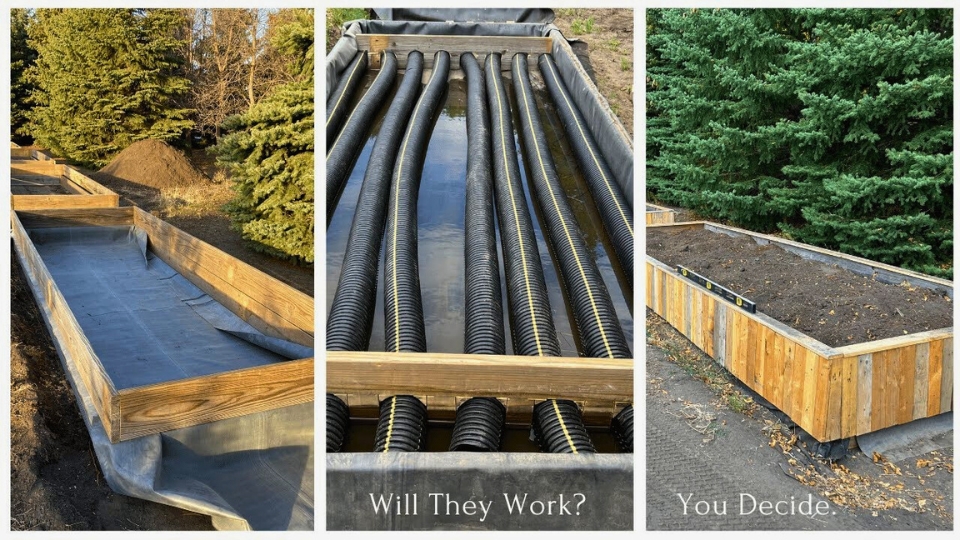
Let’s embark on this DIY adventure to build a garden that cares for itself!
Materials And Tools You Will Need
Before the building begins, gather all necessary materials and tools. Here’s what you’ll require:
- Wooden planks or a plastic raised bed kit
- PVC pipes for the watering system
- A pond liner or thick plastic sheeting
- A drill with a hole saw attachment
- Screws and a screwdriver
- Stones or gravel for drainage
- Soil and compost mix
- Water source, like a hose or bucket
Step-by-step Construction Guide
Turn your materials into a thriving garden with these simple steps:
- Frame Assembly: Connect the wooden planks or snap together the kit to form the bed.
- Liner Installation: Line the bed with the pond liner to help retain moisture.
- Set Up the Reservoir: Place stones or gravel at the bed’s base for water storage.
- Watering System: Drill holes into PVC pipes and lay them across the gravel.
- Filling with Soil: Add the soil and compost mix over the gravel layer.
- Planting: Plant your chosen greenery, ensuring roots reach the moist soil.
- Filling the reservoir: Soak the bed until water seeps through the drainage holes.
With these steps, your self-watering raised bed is ready to grow luscious plants.
Soil And Plant Selection For Optimal Growth
Welcome to the green world of self-watering raised bed gardens, where convenience meets productivity. The charm lies in crafting the right environment for plants to thrive. To achieve optimal growth, focusing on soil and plant selection is crucial.
Let’s embark on this journey to green excellence.

Choosing The Right Soil Mixture
The foundation of any garden is its soil. Self-watering raised bed gardens require a mix that supports capillary action yet drains well. Balance is key.
| Component | Function | Recommended Ratio |
|---|---|---|
| Coco Coir or Peat Moss | Retention of moisture | 30% |
| Perlite or Vermiculite | Improved aeration | 15% |
| Compost | Nutrient-rich growth medium | 30% |
| Garden Soil | Bulk and structure | 25% |
Combine these for a soil mix that is lightweight, nutritious, and self-regulating.
Best Plants For Self-watering Conditions
Selecting plants suited for self-watering systems ensures success. Ideal candidates are those who prefer consistent moisture levels.
- Leafy Greens like lettuce, spinach, and kale
- Herbs such as basil, cilantro, and mint
- Small Fruit Varieties like strawberries and dwarf tomatoes
- Root Vegetables, including carrots and radishes
Remember, plants with deep roots may not perform as well without modifications. Design your self-watering raised bed garden with these plants in mind for a lush, edible landscape that is both beautiful and bountiful.
Irrigation Essentials For A Thirst-free Garden
Ensuring that your plants stay hydrated without constant oversight starts with a well-planned irrigation system. Let’s delve into the essentials of setting up a self-watering raised bed garden that maintains optimal moisture levels for your greens.
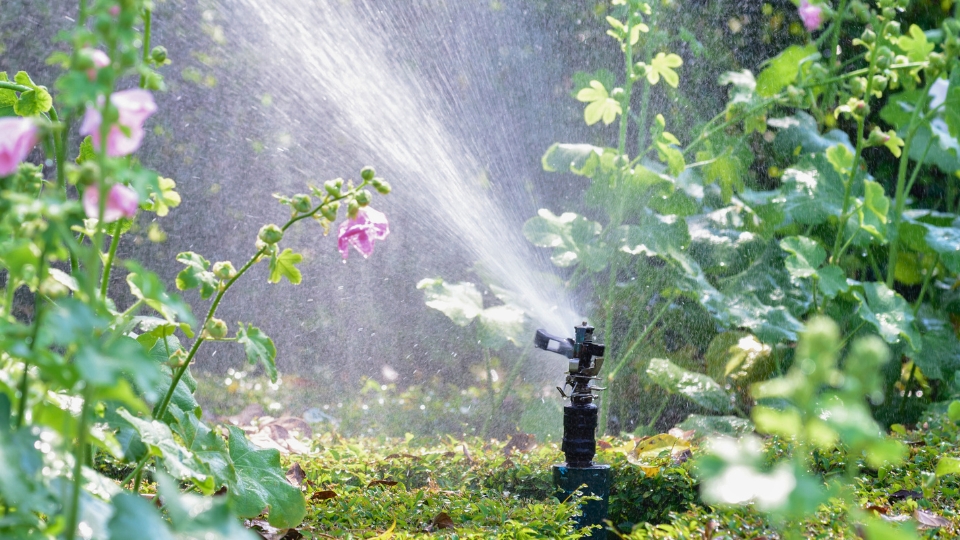
Setting Up The Watering System
Begin by selecting the right components for your garden. A self-watering system generally includes a reservoir, a filler tube, and a wicking system. Follow these simple steps:
- Install the reservoir at the base of your raised bed.
- Ensure the filler tube is accessible for easy watering.
- Place the wicking system to distribute the water evenly.
Check for leaks and blockages to keep your system efficient.
Frequency And Volume Of Watering
Water needs vary based on several factors:
- Plant type
- Weather conditions
- Soil composition
A general rule of thumb: water when the top inch of soil feels dry. Your self-watering system should be adjusted to these needs, ensuring consistent moisture without over-saturation.
| Plant Type | Water Volume | Frequency |
|---|---|---|
| Vegetables | 1-2 inches/week | 2-3 times/week |
| Flowers | 1 inch/week | 1-2 times/week |
Maintenance Tips For Sustainable Operation
Welcome to the vital section on Maintenance Tips for Sustainable Operation of Your Self-Watering Raised Bed Garden. A lush and productive garden needs more than just periodic watering. To ensure a thriving crop, certain maintenance routines are paramount.
Regular Check-ups And Adjustments
Keeping your self-watering garden in top shape involves routine oversight.
- Inspect water levels weekly to avoid drying out plants.
- Examine the connectors for any leaks or wear and tear.
- Adjust float valves as necessary to maintain proper water flow.
- Ensure the overflows are clear to prevent waterlogging.
- Test the soil moisture to verify the system’s effectiveness.
Dealing With Algae And Root Rot
Algae and root rot can be garden nightmares. Beat them with these steps:
| Problem | Solution |
|---|---|
| Algae growth |
|
| Root Rot |
|
Consistent care wards off plant stress and fosters a lush, bountiful garden. A stitch in time saves nine when it comes to garden maintenance.
Technological Integration In Modern Gardens
Modern gardens are now a blend of nature and technology, creating beautiful and efficient spaces. Self-watering raised bed gardens embody this fusion, offering a simplified gardening experience. Using advanced tech gadgets, green thumbs can ensure their plants thrive with minimal effort.
Let’s delve into the smart technology that’s transforming garden care.
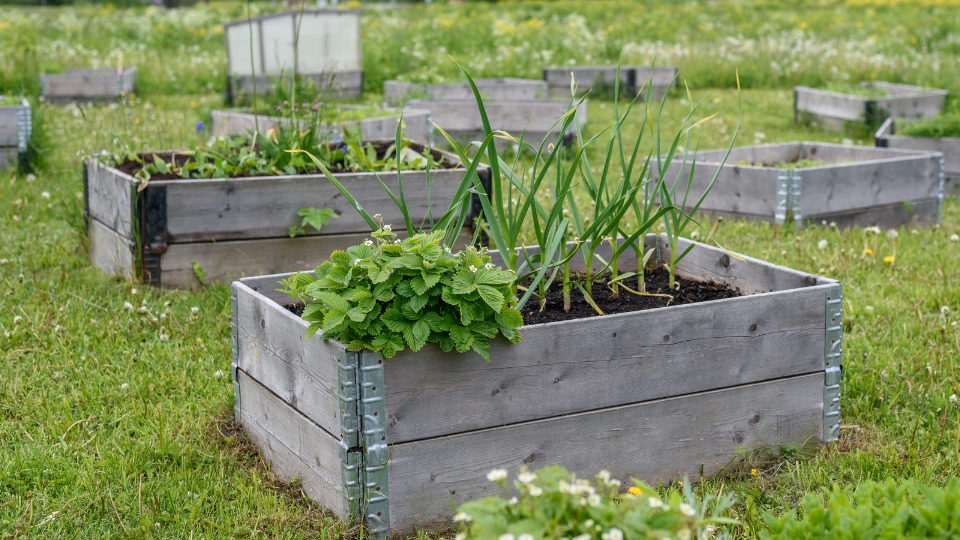
Automating Your Watering Schedule
Forget about manual watering—the future is automated. Installing a self-watering system in your raised bed garden simplifies plant care. These systems keep soil perfectly moist using a reservoir and a wicking mechanism. They can even adjust the watering frequency based on the weather.
- Set timers to water at the most effective times
- Save water and reduce utility bills
- Optimize plant growth with consistent moisture levels
This seamless integration brings steady growth and luscious plants with just the push of a button.
Sensors And Smart Devices
Modern gardens are now paired with smart devices that take precision to the next level. Sensors in your self-watering raised bed garden provide real-time data on soil moisture levels, temperature, and nutrient content.
| Device Type | Function | Benefit |
|---|---|---|
| Moisture Sensors | Track soil wetness | Prevent over/under-watering |
| Temperature Sensors | Monitor warmth | Protect against weather extremes |
| Nutrient Sensors | Assess soil richness | Guide fertilizer use |
Pair these with a smartphone app, and you get alerts on the go. Achieve a lush garden while keeping your hands clean and your mind at ease.
Case Studies: Success Stories And Learned Lessons
Green thumbs around the world are turning to self-watering raised bed gardens. These innovative setups offer a stress-free way to grow plants. They ensure consistent moisture, making them a win for busy or forgetful gardeners.
This section dives into the real-life stories of those who’ve reaped bountiful harvests. It also uncovers the hurdles some faced and the solutions they found.
Urban Rooftop Gardening Breakthroughs
Bright city skylines often lack greenery, but urban rooftop gardens are changing this. With limited space, city dwellers are turning rooftops into lush gardens. Self-watering raised beds mean they are waterless and harvest more.
- Case Study 1: The High-Rise Veggie Haven An apartment complex transformed its roof. They used raised beds with self-watering systems. The result? Fresh veggies year-round.
- Case Study 2: The Corporate Garden Initiative: A company installed raised gardens on their building’s roof. Staff involvement and healthy eating soared, and stress dropped.
Both cases show improved mental health and community among city gardeners.
Rural Applications And Scaling Up
Rural regions are sprawling with space yet often miss a consistent water supply. Large-scale, self-watering raised beds work as a smart solution.
- Lesson 1: Start Small: One family began with a single bed to test. They soon expanded to ten. It was a success.
- Lesson 2: Monitor and Adjust: A farm faced algae blockages in its self-watering system. They added filters and created a cleaning schedule. Crops flourished.
Large-scale setups require more attention but yield greater rewards.
| Parameters | Urban Rooftop Gardening | Rural Scaling Up |
|---|---|---|
| Space | Limited, High Value | Abundant |
| Water Efficiency | Essential | Highly Beneficial |
| Main Challenge | Weight Load | System Maintenance |
Future Of Self-watering Raised Bed Gardening
The way we grow our food is always evolving. Self-watering raised bed gardens are at the forefront of this change. They offer a promising path toward more efficient and sustainable gardening. With advancements in technology and design, the future of these self-sustaining ecosystems looks brighter than ever.
Let’s explore what lies ahead for gardeners everywhere.
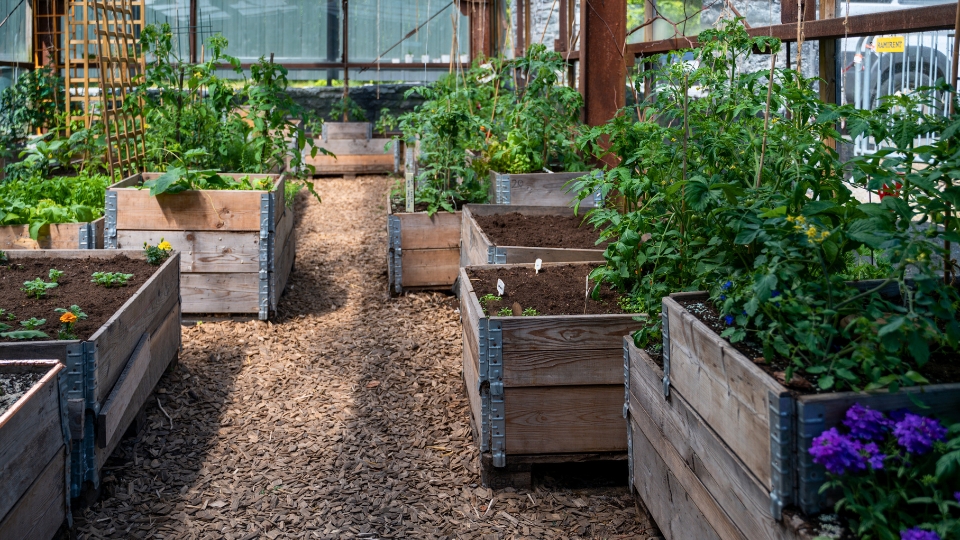
Innovations On The Horizon
Innovative technologies are taking self-watering raised beds to new heights. Here’s what’s next:
- Smart Sensors: These devices monitor soil moisture, ensuring plants get just the right amount of water.
- Automated Systems: New systems can adjust water levels based on weather forecasts.
- Recycled Materials: Eco-friendly garden beds made from upcycled plastics reduce waste.
As these innovations develop, gardeners will see enhanced growth, lower water bills, and fewer chores.
The Role Of Community In Sustainable Gardening
Community plays a vital role in sustainable gardening’s future. Here’s how:
- The sharing of self-watering systems among neighbors fosters a collaborative spirit.
- Gardening workshops teach self-watering techniques to more people.
- Local gardens can provide fresh produce to schools and food banks.
These collective efforts unite people, create greener cities, and promote food security.
FAQs For Self Watering Raised Bed Garden
Do self-watering raised beds work?
Yes, self-watering raised beds are effective. They ensure consistent moisture for plants and reduce watering frequency, making them a practical solution for gardeners seeking to maintain a thriving garden with less effort.
How Do You Make a Self-Watering Raised Garden Bed?
Install a water reservoir at the base to create a self-watering raised garden bed. Cover it with a permeable landscape fabric. Fill the bed with soil and plants, and add a water-fill tube. Regularly fill the reservoir to keep the plants hydrated.
How do you automatically water raised beds?
Automatic watering of raised beds involves using drip irrigation systems, soaker hoses, or timers connected to water sources to ensure consistent moisture without manual intervention. Install these systems for routine, efficient watering.
Final Word
Embracing a self-watering raised bed garden simplifies plant care while boosting yield. This innovation melds convenience with eco-sustainability, perfect for busy green thumbs. Dive into this gardening upgrade and watch your plants thrive with minimal effort. Experience lush, healthy growth season after season—your garden’s future looks effortlessly bountiful.
This Informative Video source is: https://www.youtube.com/watch?v=dlxsapM_1ec


